A Case for Phuket Beyond the Beach: The Ice Cream Coloured Old Town
Phuket is undoubtedly the most famous island in Thailand, if not all of Asia. Fame comes with a price of course, and perhaps for that reason there are many people around the globe who connect Phuket’s global fame to somehow lacking local authenticity. For some, being globally famous and well-promoted means it must be over-developed, or there must be too many tourists. Over the years of building a travel business, people have often asked: “should we visit Phuket? We’re not really beach people. Is it over-developed?”
My best answer to that would be a Times Square analogy. If you told any New Yorker, or even a regular visitor to New York, that Times Square was a great representation of New York, you’d probably be laughed at as someone who’d just emerged from decades in a cave. For most, it’s that neon-battery pack of Instagram insanity that one by-passes or avoids altogether in order to get to somewhere else.
When people think of Phuket, the images that spring to mind are big hotels, shopping malls, oligarch-pleasing infrastructure, top class marinas and superyachts. It is also the nightlife capital of Thailand, competing with Bangkok.
It can also have traffic, touristy strips of high-octane hedonism, and bargain day trips to busy islands made famous in ‘90’s Hollywood movies.
But that side is not the real Phuket or what makes Phuket truly great. Much like there’s not much within several blocks of Times Square that would fit on any local’s top 25 things to do in the city that never sleeps.
I’ve just spent a month in Phuket, July 2021, and it has reminded me just how cool, diverse, and authentic Phuket really is. Yes authentic, there’s that word again.
The essence of Phuket is in the spaces in between the images we’re all familiar with. This inspired me to write a multi-part series on some of the things often overlooked in Phuket that make it exceptionally cool – right now. It might just be that Phuket has been misunderstood, and misrepresented, for decades.
Firstly, is it over-developed?
Well, if you go to the busy and developed part, yes (see Times Square analogy above). But flying over the island 25 years ago revealed a lot of green, mountainous forest, which is still very much there today. In fact, there are several communities, Bang Rong in the northeast, for example, who emphasize mangrove reforestation, forest sustainability, and outright banning of cutting trees for charcoal which was an environmental hazard up until the late 1990’s.
A day on a motorbike around the island brings you to cozy, chill-out beach villages like Ao Yon, Rawai, Naithon, just to name a few. These beaches would not be out of place on far flung islands in Ranong or Trad Province. I spent a couple of hours at the 3-cottage gem called The Cove in Ao Yon, and over a fresh coconut drink felt as though I’d drifted off into a 1990 remote Thai island dream. It is on a tiny, virtually private crescent beach, swaying palm trees, and no nearby vehicles or busy roads.
Yes, you can get away from the busier parts of Phuket and have the best of modern luxury, or quiet bohemian bliss, or both.
On a single island you can go from top-of-class resorts like Trisara, The Slate, Rosewood, Amanpuri, and Andara, which compete with anything globally, to tiny private beach paradises like The Mooring, or the kitschy vintage Memory at On On Hotel in the old town.
Venture an inch off the map, and you can still very much transport yourself back to early 1990’s Phuket without much effort.
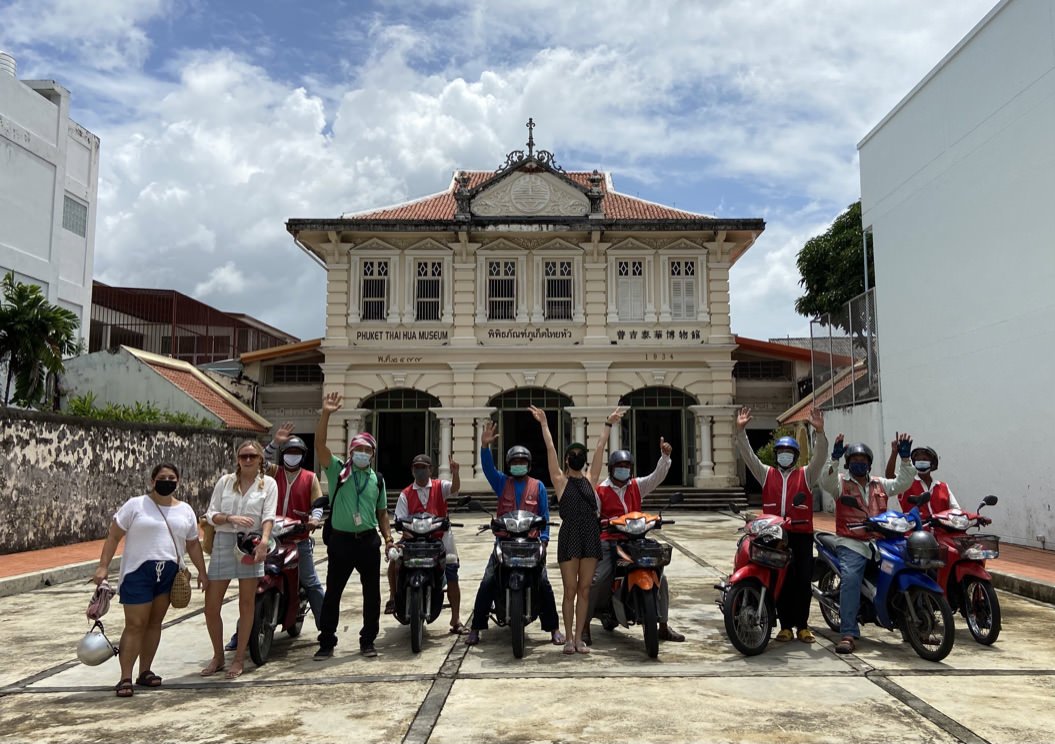
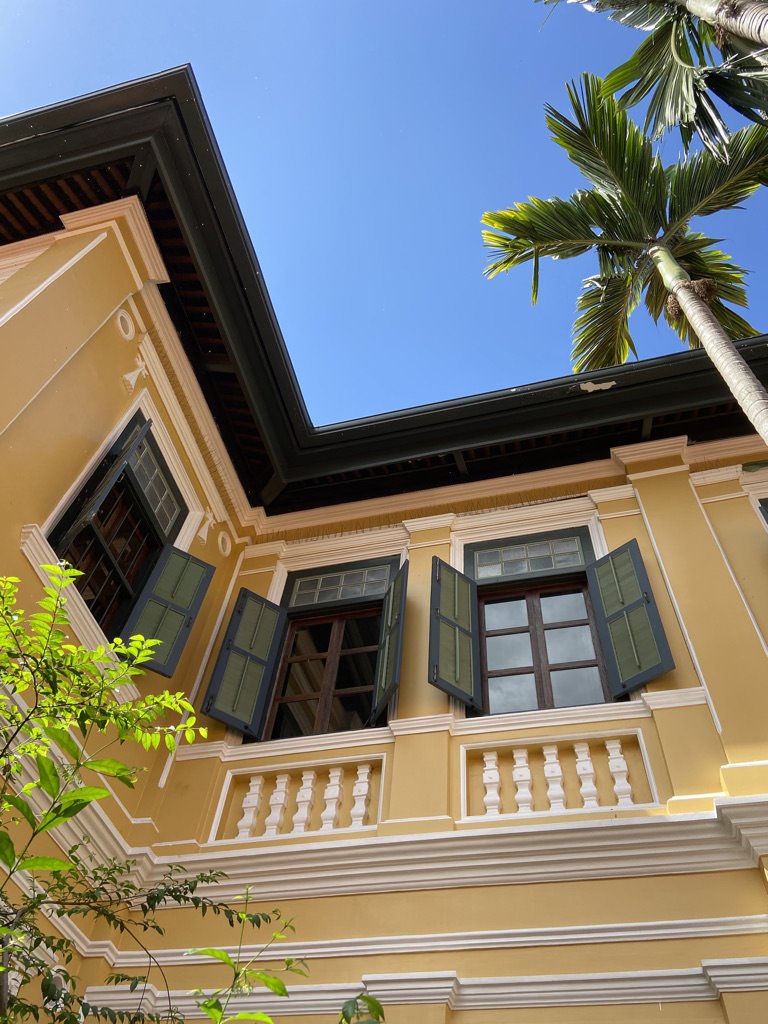
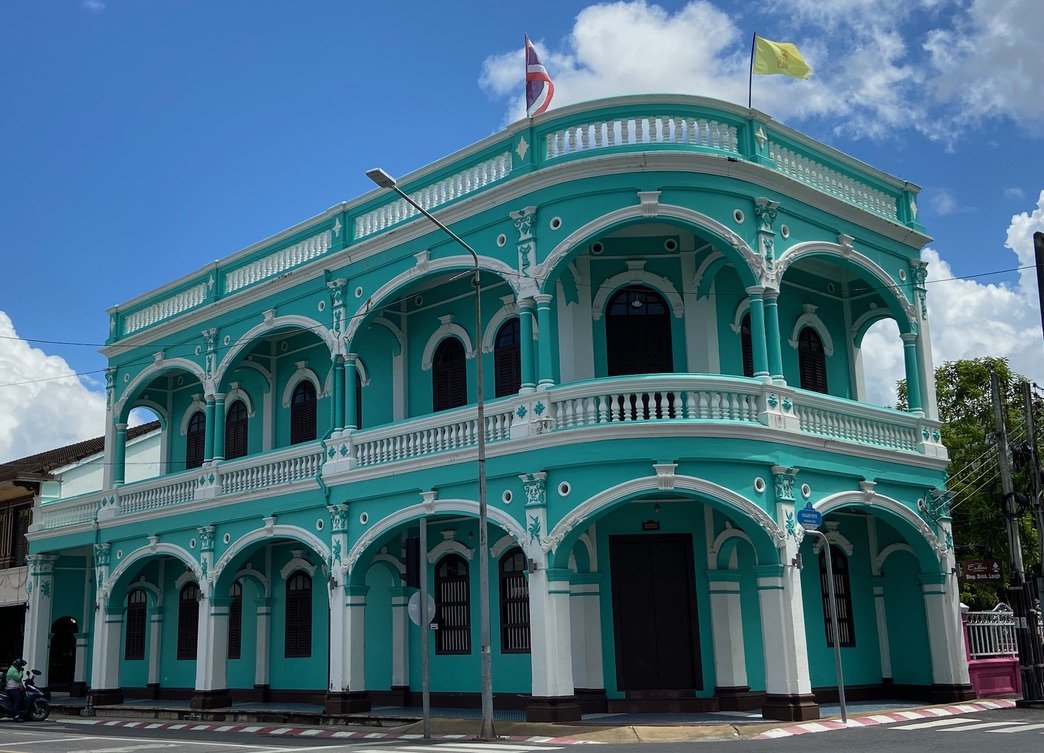
The ice cream coloured Old Town keeps getting better
A thorough exploration of Phuket Old Town is absolutely a reason unto itself to visit the island.
Phuket’s Old Town is a city that spawned its own vocabulary, like Perenakan, Baba Nyonya, and confusingly-named design style Sino-Portuguese (it seems nothing like that actually existed connecting Portugal with China in terms of vernacular architecture in Thailand, so, let’s go with Sino-European, or Sino-Malay-European, or Sino-English).
Phuket’s Old Town is a stunner, and has been for 150 years. Back in 1915, King Rama VI wondered if the secret would get out that “Phuket might be the most sophisticated and beautiful city in Thailand”.
The backstory: Phuket was built by sea-faring traders in the 16th and 17th centuries from China, Portugal, England, India, and Java due to its abundant natural resources, namely ivory, pearls, precious hardwood, animal hides and gems. Then the tin boom shaped Phuket’s destiny in the 18th century when Dutch, French, Portuguese and English came to the island along with miners from China to build their fortunes on the island’s tin dreams. The southern Chinese who settled in Phuket married into local families, and the resulting mixed-blood marriages gave way to a new ethnicity known as the Peranakan or Baba Nyonya (also written Baba Yaya, the male and female descents of the early migrant mixed marriages). This uniquely Phuketian identity can be seen in the architecture, wall murals, restored museums and religious shrines in the old town. A slow wander in the old town reveals moments that feel like the charms of Hanoi, glimpses of colonial Singapore and Penang, and hints of Europe. This wildly global combination creates something akin to a tropical Chinatown off a Lisbon side-street. Aesthetic heaven. Food heaven. And, lest I say it, Instagram heaven.
Recent improvements like moving power lines underground, encouraging local shops to revert back to the ice cream-coloured shop fronts on the main streets, and a lovely emphasis on art, wall murals, building conservation and home-grown boutiques means that the old town is better than ever. And it was always good.
I wandered, ate, talked with locals, photographed, and admired the quiet hustle of the original Phuket. An old lady on Dibuk Road invited me in to see her 120-year old “tube house”, a long wooden home with a narrow entrance, complete with original ventilation chambers in the middle over a water well dug by her great-grandfather. I walked by a few days later, and she invited me in again, this time for tea. This is the soft soul of old Phuket that made me temporarily forget it is an island known as a global yachting and luxury nightlife mecca.
My favourite time to explore the old town is at night, preferably when the market is not in swing (so, not Sunday). The beautiful, century-old architecture stands in silence, gracefully illuminated, and there are plenty of quiet little restaurants and bars to slip into. This is also when you’re also most likely to end up sharing tea with a 4th generation Nyonya.
Food and Drink in the old town is another reason alone to come to Phuket
I did the hard yards of cocktail lounge hopping. Favourites are Club No 43 as well as Dibuk House – both with creative menus and great staff worthy of global hipster recognition as cocktail havens oozing old world cool. Both also have slurpable espresso martinis featuring Northern Thai Coffee and various cocktails featuring Phuket Rum and Gin. The “support local” and local low carbon impact on these menus really deserves another drink for the road, just for good measure.
Several new coffee houses, wine bars and cocktail lounges opened, almost daily, over the course of July, such as the new branch of Daily Dose on Yaowarat Road. It’s the same duo, Khun Tik and Chef Noi from Suay Restaurant. Chef Noi also lends his mobile cheffing skills for private events at Chalong Bay Rum as well as The Underwood Art Factory, which delighted our recent media guests. He has become the go to chef for private catered events and funkified progressive Thai cuisine. Plus he’s a nice guy.
Phuket Old Town might be the most caffeinated place in Thailand, outside of Pai, which may boast the most coffee shops per capita in Thailand. I sought local advice various times for my fix, and was regularly steered to Campus Coffee on Krabi Road, and award-winning superstar barista creations at Shelter Coffee, on Dibuk Road. Certainly the old town has the caffeinated energy to keep up with the pace of expectations.
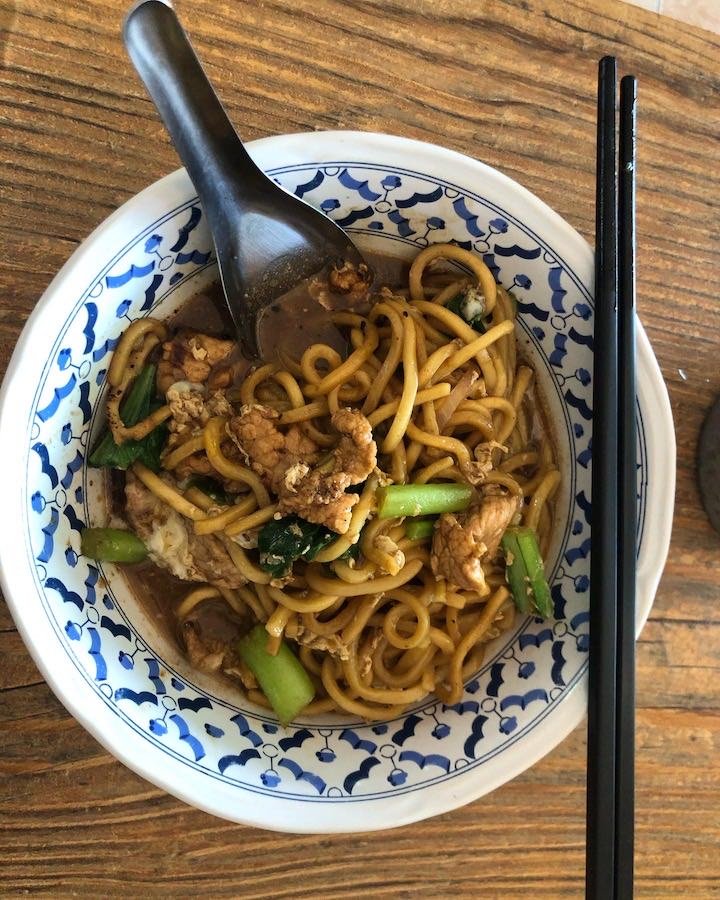
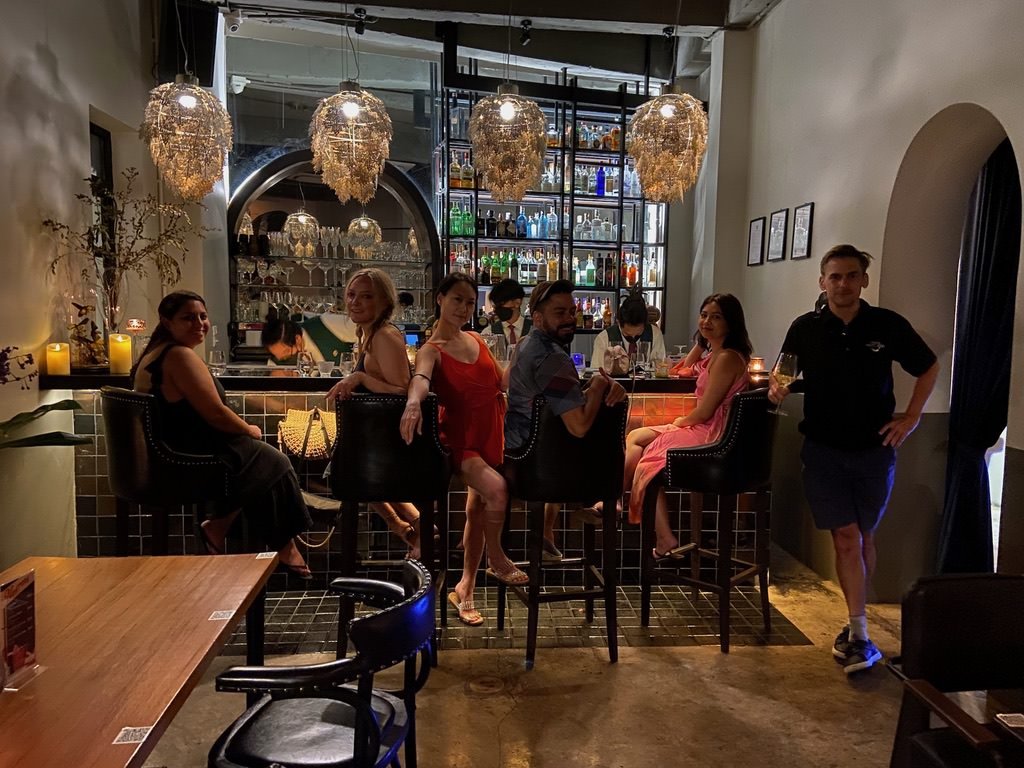
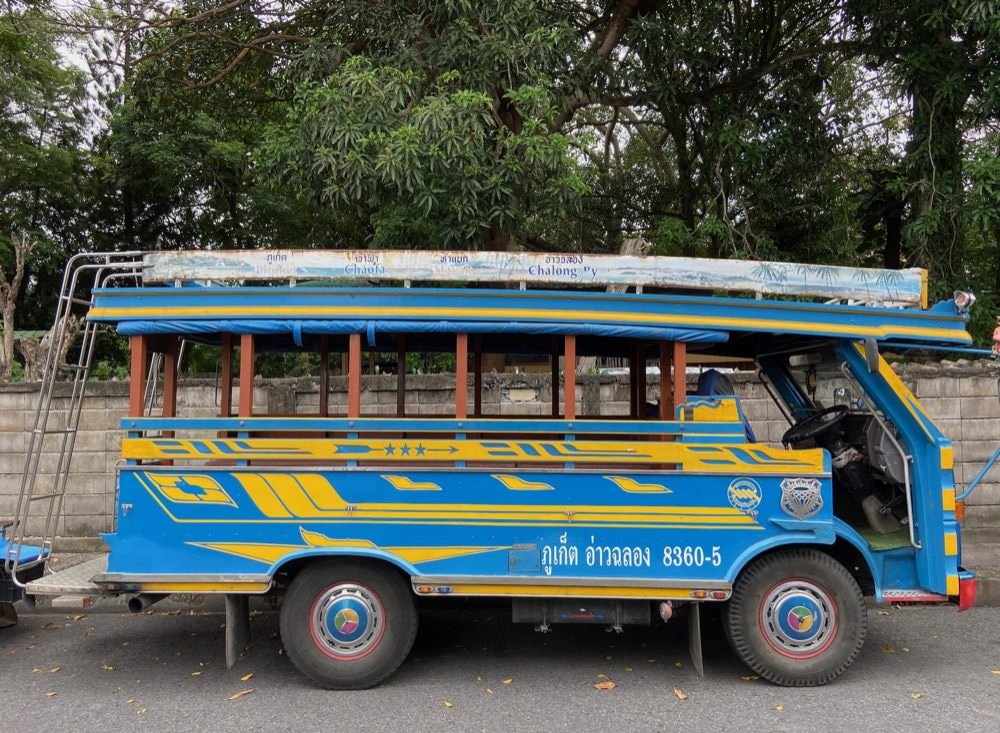
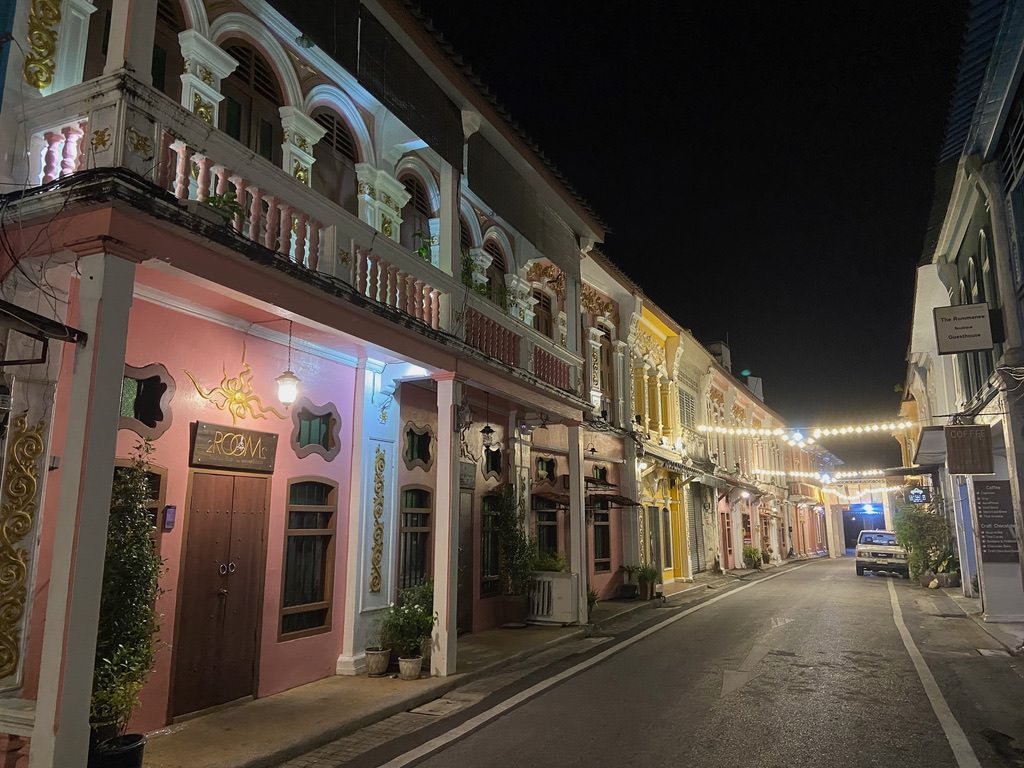
Food baby, Food
Phuket’s global bragging-rights comfort food dish is probably Mee Hokkien, the egg-noodle with pork and/or seafood in thick, peppery soup, bright and adapted by the island’s early Fujian Chinese community. I had no less than 10 dishes in July, all at different locations. There’s even a map of Mee Hokkien of the top 30 or so places on the island to have it, including 20 or so in the Old Town itself. My fave: Go La for the old school charcoal grill and the to go version wrapped in banana leaves. I also had an outstanding version at a little place near the entrance to Wat Chalong. I love that about Phuket, and Thailand for that matter. Miraculously good food from the most nondescript roadside kitchens.
Mee Hokkien has its connoisseurs. See this well-researched list by the never-full team at Fantastic Food Search. I didn’t get to try their recommendation for fried pigs face, but it does rank as one of Phuket’s other must-try dishes.
Of course you need to also eat at Raya, or their younger sister’s outlet behind it, One Chun. Similar vibe and menu, same extended family, different kitchen. Both feature another of Phuket’s must-eats, that being Gaeng Nua Pu Bai Chaplu, massive chunks of white crab meat and an incredible use of turmeric in the coconut herbal curry-for-your-soul soup, topped with piper leaves. This was like something concocted by Jay Fai’s long lost southern cousin on a turmeric fit. I was utterly helpless, and lathered it over vermicelli noodles in the most selfish display of gluttony I’ve performed in ages. I faked participating in a dinner conversation with friends for fifteen minutes while privately lost in its glory. I regret nothing.
The food and drink scene in the old town is part of Phuket’s native depth, which has been sometimes overlooked the past 25 years in favour of the more globally famous beaches, nightclubs, and superyachts. I love those things too, but Phuket is, afterall, recognized by UNESCO as a global city of gastronomy.
Go there, eat your heart out.
